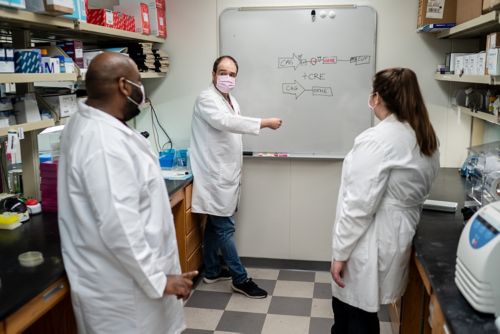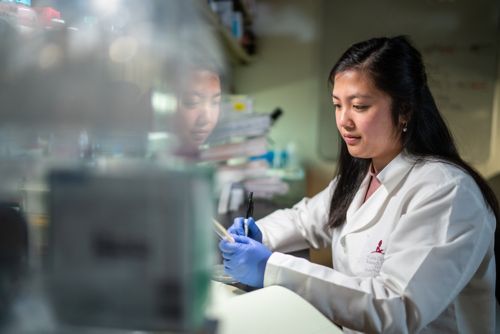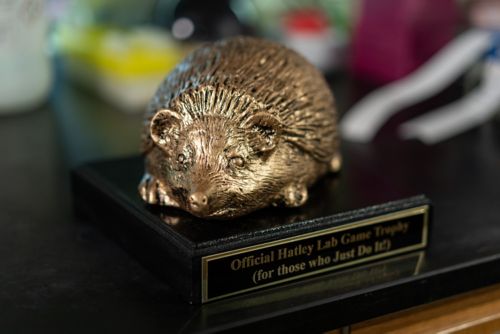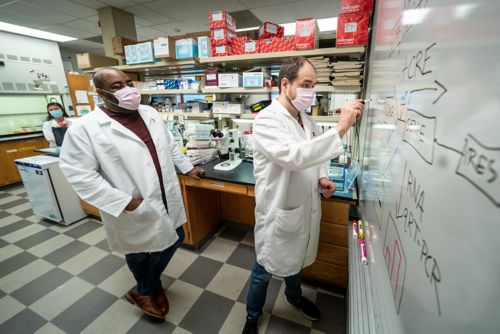St. Jude Family of Websites
Explore our cutting edge research, world-class patient care, career opportunities and more.
St. Jude Children's Research Hospital Home

- Fundraising
St. Jude Family of Websites
Explore our cutting edge research, world-class patient care, career opportunities and more.
St. Jude Children's Research Hospital Home

- Fundraising
Mark E. Hatley Lab
Exploring how the trajectory of developing cells get hijacked in the process of cellular transformation in pediatric cancer
About the Hatley Lab
Rhabdomyosarcoma is thought to develop after genetic changes occur in developing muscle cells. In children, however, rhabdomyosarcoma is found throughout the body, often in regions devoid of muscle tissue. Our laboratory is working to understand the process of cancer transformation, and how cell of origin dictates features of the disease. Our work has the potential to inform cancer diagnosis, prognosis, and treatment.

Our research summary
Our research focuses on the developmental and genetic mechanisms behind a cellular transformation in pediatric rhabdomyosarcoma. Through our research, we aim to ultimately uncover novel therapeutic vulnerabilities to treat rhabdomyosarcoma. Investigators have long believed that rhabdomyosarcoma develops solely from genetic insults to developing muscle progenitor cells. In children, however, rhabdomyosarcoma can be found all over the body in tissues that are devoid of skeletal muscle – like the salivary glands, biliary tree, omentum, and the bladder, among other parts of the body.
Through genetic fate mapping in genetically engineered mouse models, our laboratory revealed that rhabdomyosarcoma in children can originate from endothelial progenitor cells and not solely from muscle progenitor cells. This research revealed that there is a cell reprogramming event that transdifferentiates the transforming cells. Specifically, we found that some cells that are committed to becoming endothelial cells get reprogrammed to become a myoblast-like cell or rhabdomyosarcoma. Our laboratory is studying the mechanisms that underlie this cell reprogramming event and what dictates that cell fate decision. As well, we seek to determine how the cellular origin dictates the location of these tumors and how that origin ultimately predicts patient survival.

Along this line, our laboratory is working to develop more faithful in vivo models of pediatric rhabdomyosarcoma tumors based on data from the Pediatric Cancer Genome Project and other sources. In vivo models that combine the relevant genetic drivers in the appropriate cellular and developmental context are necessary to understand the biology and discover therapeutic vulnerabilities of rhabdomyosarcoma.
Another line of research inquiry in our laboratory involves cancer predisposition syndromes. Rhabdomyosarcoma is a common disease among these syndromes. We are specifically investigating DICER1 – the enzyme in the last step of microRNA processing – to understand how the altered DICER1 gene predisposes people to cancer and drives tumor formation. Our laboratory has developed mouse models to gain insight into how this germline loss of DICER1, somatic mutant DICER1, and resulting microRNA imbalance affects tumorigenesis.

Our rhabdomyosarcoma research involves a number of internal and external collaborations and includes techniques and methodologies like the development of unique mouse models, the use of human primary and rhabdomyosarcoma cell lines, patient-derived xenografts and induced pluripotent stem cells. To advance our research, our laboratory also uses resources like applied bioinformatics, gene editing, transgenic mouse generation, light microscopy, and flow cytometry.

Selected Publications
Contact us
Mark E. Hatley, MD, PhD
Associate Member
Department of Oncology
Director, Division of Molecular Oncology
MS354
St. Jude Children's Research Hospital
Follow Us

Memphis, TN, 38105-3678 USA GET DIRECTIONS